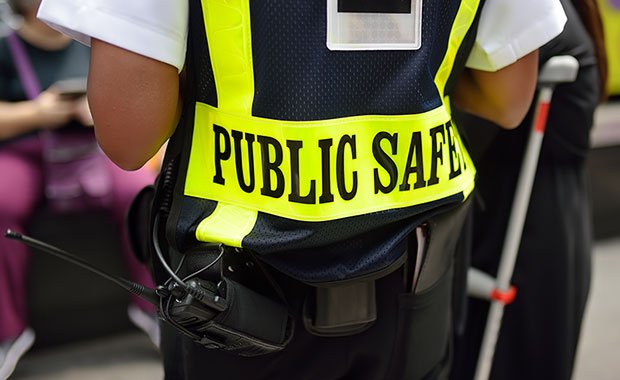
[ad_1]
In the last few decades, technological innovations have transformed healthcare and public safety. Telehealth services, digitization of healthcare processes, and smart technologies and solutions have improved operational efficiencies, public awareness, and quality of patient care in many parts of the world.
In the next few years, strategic investments in IT solutions and services in the healthcare and public safety sectors will pave the way for high-quality health and safety standards globally.
Recent research reports state that digital spending in the public safety sector will reach US$201 billion by 2027. Similarly, experts estimate the healthcare IT market will grow to $390 billion by 2024.
‘Predict and Prevent’
Today, the world is reeling from a wide range of challenges that need to be managed quickly and effectively. While the current pandemic has turned the world upside down, global unrest and limited access to healthcare in several parts of the world also need immediate attention from health and welfare agencies.
In addition to health and security challenges, there are additional issues. Natural calamities such as floods and earthquakes, and digital threats like cybercrime and hacking, need strategic management to avert disasters at scale.
Combatting these challenges requires health and public safety agencies to develop robust roadmaps with digital technologies at their foundation.
Digital technologies can help shift health and public safety agencies from a “detect and respond” approach to a “predict and prevent” stratagem. They can also set the stage for a more connected and data-led approach through robust cybersecurity architectures, efficient remote workforces, and secure connectivity services.
If leveraged through a managed, pay-as-you-go approach, these technologies optimize costs while assisting organizations in delivering a high-quality service.
Five New-Age Technologies to Embrace
The future of health and public safety will be defined by how organizations adopt modern, digital technologies to improve operational efficiency, multi-agency collaboration, and decision-making.
Following are five key technologies that will redefine the healthcare and public safety landscape:
1. Internet of Things: IoT has been helping businesses maximize resources and facilitate better engagement and connectivity between service providers and consumers. When it comes to healthcare, IoT-based applications can empower healthcare providers to monitor patients remotely. When it comes to security operations, IoT-based security devices and applications can set the foundation for faster decision-making by utilizing robust connectivity, seamless interaction between different devices, and access to real-time data.
2. Big Data and Analytics: The volume, velocity, and variety of healthcare data increases as healthcare services extend to the remotest parts of the world. Similarly, for public safety agencies, data is now produced from digital as well as traditional channels. Using big data and analytics, health and public safety agencies can analyze humongous amounts of data and convert them into actionable insights to unearth trends and patterns and possibly avert adverse situations from escalating to life-threatening levels.
3. Communication Networks: 4G LTE and modern data communication protocols accelerate the speed of information exchange between individuals and healthcare service providers/public safety control rooms. By optimizing communication networks, service providers can create robust and continuous communication channels, which can act as a game-changer for the healthcare and public safety sectors.
4. Artificial Intelligence: Many healthcare providers already use AI for transactional tasks such as scheduling meetings, automating paperwork, and maintaining accounts. But very soon, the realm of AI will expand to comprise virtual biopsies, app-driven diagnostics, and more. Even in the public safety sector, AI is poised to evolve from simple administrative tasks to core tasks such as preventive policing, crime investigation, disaster management, and traffic control.
5. Cloud Advancement: Across industries, cloud technology has helped enterprises create a unified platform to store, process, and digitize data. As the volume of information related to individual health and safety records from a wide range of sources increases, cloud technology will play a significant role in managing the data. Organizations can then leverage these data to improve the efficiency and reliability of healthcare and public safety operations.
Conclusion
Modern technologies provide excellent support in streamlining enterprise processes and efficiently utilizing varied resources. However, to make the most of these technologies and drive end-to-end digital transformation, companies in healthcare and public safety sectors need to partner with an experienced and skilled technology vendor.
The right technology partner will have a sound understanding of the evolving technology stack and a good understanding of how to align these technologies to manage emerging opportunities and threats.
Since both the healthcare and public safety sectors are incredibly dynamic, businesses and organizations in these sectors should look for partners with proven abilities in driving large-scale technological upgrades as well as cost and operational efficiencies.
[ad_2]
Source link






